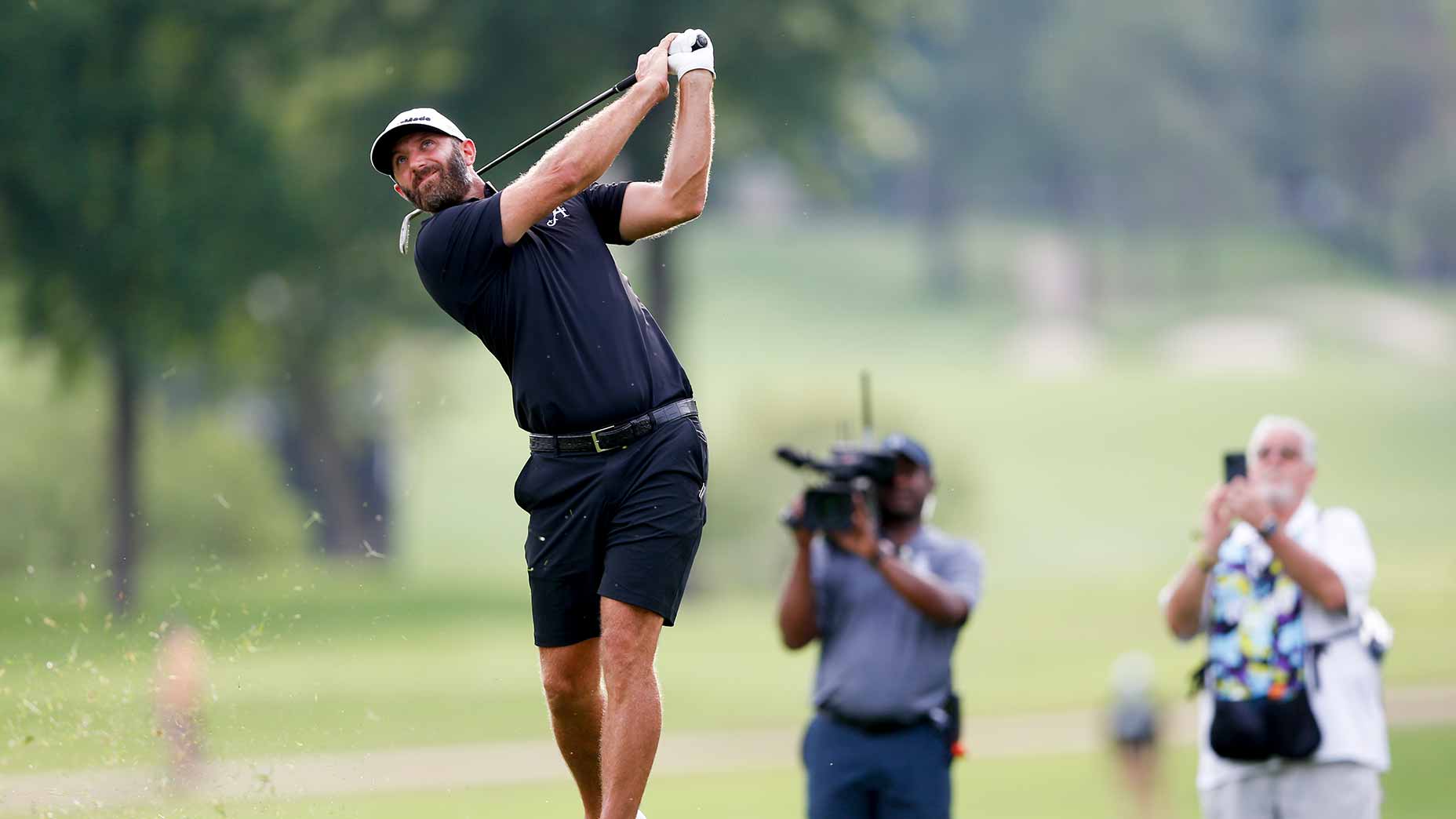For a few minutes on Sunday afternoon in Oklahoma, LIV Tulsa was must-watch television. That, it turned out, was the problem: for much of the golf world, LIV Tulsa wasn’t on television.
Yes, as LIV finished its latest event, it did so without the aid of TV viewership in some of the country’s biggest media markets, which opted to air scheduled programming over the three-way playoff deciding the league’s latest tournament.
It all started as Dustin Johnson turned for the 18th hole early Sunday evening. Branden Grace and Cameron Smith, the tournament co-leaders, were in the clubhouse at one stroke better than Johnson’s 16 under and readying for a playoff. If Johnson, a member of the last group left on the course, made birdie on the 18th, he’d join Grace and Smith in the playoff.
It was, in theory, a dream scenario for the league’s U.S. broadcaster, the CW. Playoffs are routinely the most-watched moments of golf tournaments, with floods of viewers tuning in for the assurance of witnessing the tournament-deciding moment. A playoff with Johnson and Smith would give the CW two of LIV’s most-recognizable players going head-to-head in that setting. Even if the playoff turned into a dud, the situation promised at least another 20 minutes of high-stakes action to viewers.
But as Johnson’s birdie putt dropped, sending the tournament into a three-way playoff, LIV’s lead broadcaster Arlo White offered a quick note to the fans watching from home: the broadcast was also available to viewers on the CW app.
At the time, it seemed like a strange pronouncement. Why bother with a moment of self-promotion when everyone who planned to watch the tournament was already tuned in? But a few seconds later, as the clocks turned to 6:30 p.m. ET, a host of fans quickly learned why. As the playoff began, affiliates in major markets across the United States began switching off from LIV Tulsa, resuming normal programming while the tournament hadn’t been decided.
For those in New York, Dallas, Philadelphia, Chicago, and a host of the other “top-25” TV markets that represent huge percentages of TV viewership, the only way to watch the playoff came via the LIVGolf+ and CW apps. Viewers in those markets, who just minutes earlier were watching the action live, were treated instead to unwanted sitcom reruns and news shows.
Quickly, LIV’s dream viewership situation had devolved into a nightmare. Fans on social media were angry with the network’s seemingly abrupt decision, and with LIV for allowing it to happen. LIV, for its part, was likely just as angry at the lost viewership from those key markets — a significant metric for the league in generating advertiser and sponsor interest.
As a few LIV-tied accounts pointed out, the CW’s decision to drop LIV was similar in many ways to the “coverage gaps” administered many weeks by PGA Tour broadcast partners. Except, of course, that unlike the Tour’s coverage gaps — which usually come before the beginning of weekend coverage — LIV’s happened to land during the tournament’s most pivotal stretch. That sort of coverage gap would be an extreme outlier for golf’s establishment broadcasters. In fact, just weeks ago NBC extended its coverage by more than 90 minutes to show the completion of the Chevron Championship, collecting record ratings along the way.
It will be difficult to know how many viewers LIV lost by virtue of the coverage decision, particularly considering the league’s own inconsistencies in reporting TV audience sizes. The good news, at least, is that LIV won’t have very long to stew on the audience gap lost in Dustin Johnson’s victory. The league’s next televised event will come May 26-28 in Washington, D.C.
